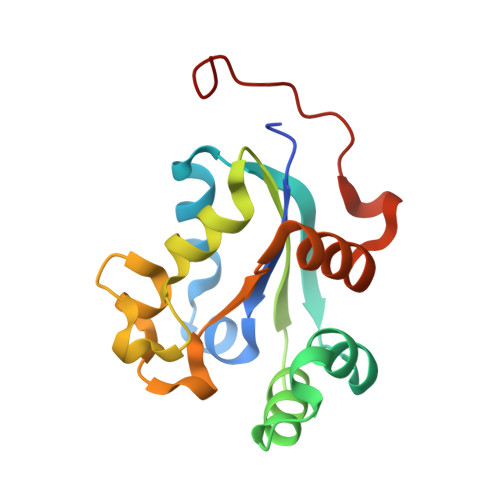Adenosine phosphonoacetic acid is slowly metabolized by NDP kinase.
Chen, Y., Morera, S., Pasti, C., Angusti, A., Solaroli, N., Veron, M., Janin, J., Manfredini, S., Deville-Bonne, D.(2005) Med Chem 1: 529-536
- PubMed: 16787337
- DOI: https://doi.org/10.2174/157340605774598162
- Primary Citation of Related Structures:
1S5Z - PubMed Abstract:
NDP kinase catalyzes the last step in the phosphorylation of nucleotides. It is also involved in the activation by cellular kinases of nucleoside analogs used in antiviral therapies. Adenosine phosphonoacetic acid, a close analog of ADP already proposed as an inhibitor of ribonucleotide reductase, was found to be a poor substrate for human NDP kinase, as well as a weak inhibitor with an equilibrium dissociation constant of 0.6 mM to be compared to 0.025 mM for ADP. The X-ray structure of a complex of adenosine phosphonoacetic acid and the NDP kinase from Dictyostelium was determined to 2.0 A resolution showing that the analog adopts a binding mode similar to ADP, but that no magnesium ion is present at the active site. As ACP may also interfere with other cellular kinases, its potential as a drug targeting NDP kinase or ribonucleotide reductase is likely to be limited due to strong side effects. The design of new molecules with a narrower specificity and a stronger affinity will benefit from the detailed knowledge of the complex ACP-NDP kinase.
- Laboratoire d'Enzymologie et de Biochimie Structurales, CNRS UPR 9063, Paris, France.
Organizational Affiliation:


















